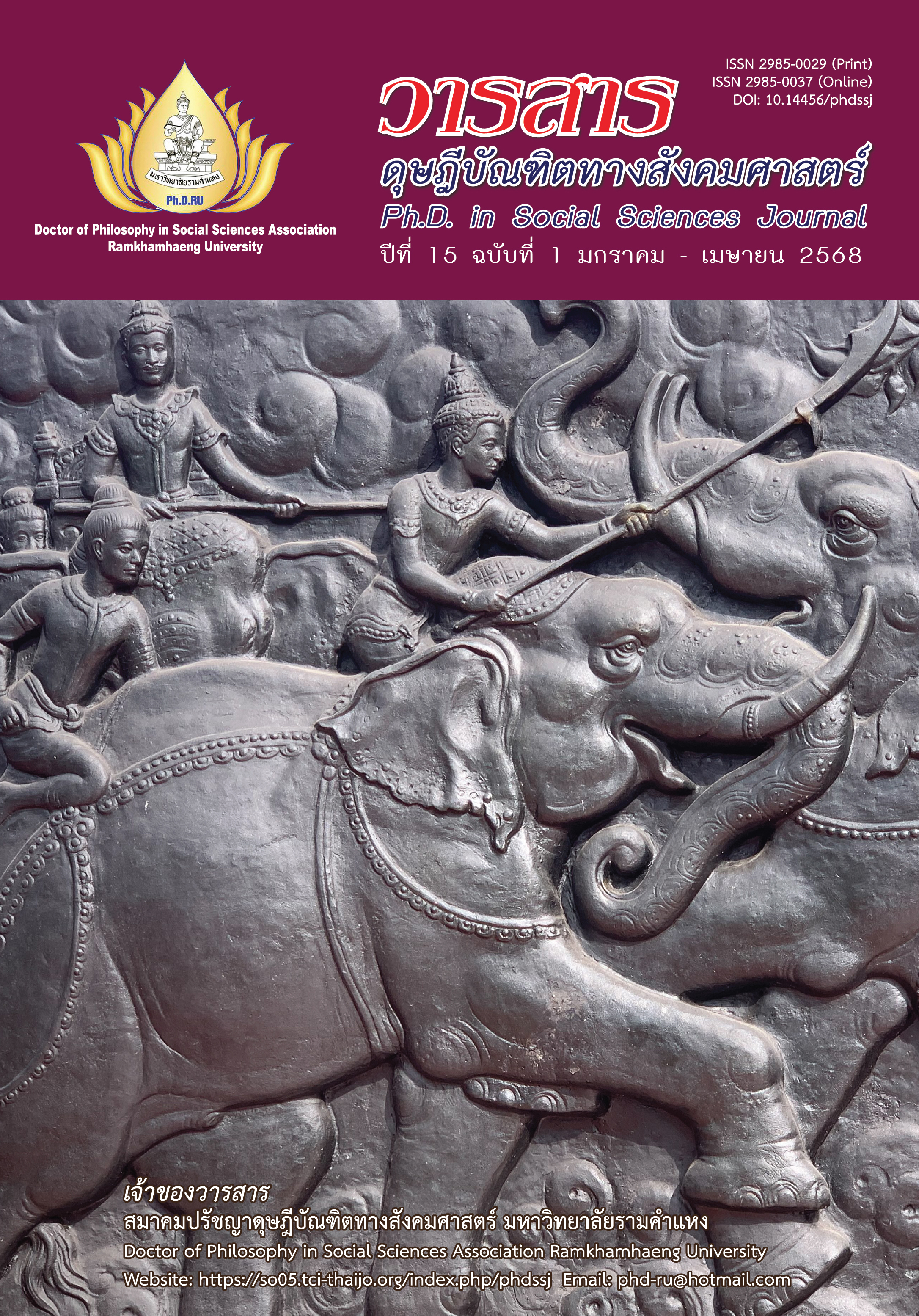The Effects of User Perceptions Factors on Intention to Use Thailand Digital Center for Tourism and Hospitality Innovation
Main Article Content
Abstract
This research article aims to (1) study the levels of perceived usefulness, perceived ease of use, percieved risks, percieved policy effectiveness and intention to use the digital center for tourism and services, (2) study the effects of perceived usefulness, perceived ease of use, percieved risks and perceived policy effectiveness on the intention to use the Digital Center for Tourism and Services, and (3) create a model of factors affecting the acceptance of the use of the Digital Center for Tourism and Services in Thailand. It is a mixed research method, collecting data from documentary research and in-depth interviews and the discussion, the quantitative sample group is 500 Thai and foreign tourists who have used the digital center services. Key informants were specifically selected from groups of civil servants in government agencies and private entrepreneurs and 18 experts in information technology management and service work, in order to draw conclusions by analyzing the content and making recommendations referring to the theory of data organization. and the statistics used in analyzing the quantitative data, including the remaining components in the standard section, structural components, and the structural equation model.
Findings are as follows: (1) perceived usefulness, perceived ease of use, percieved risks, perceived policy effectiveness and the intention to use the digital center for tourism and services in Thailand was at a high level, (2) perceived usefulness, perceived ease of use, and perceived policy effectiveness had a positive effect on the intention to use the digital center for tourism and services in Thailand, while percieved risks had a negative effect on perceived benefits and intention to use digital centers for tourism and services in Thailand, and (3) The model of factors affecting the acceptance of the use of digital centers for tourism and services in Thailand is consistent with empirical data.
Article Details

This work is licensed under a Creative Commons Attribution-NonCommercial-NoDerivatives 4.0 International License.
Academic articles, research articles, and book reviews in the Ph.D. in Social Sciences Journal are author’s opinions, and not the publisher’s, and is not the responsibility of the Ph.D. in Social Sciences Journal Philosophy Association, Ramkhamhaeng University. (In the case that research is done on human, the researcher has to be trained in Ethics for Doing Research on Human Training and has to produce the evidence of the training).
References
Agnes, E. (1999). Webster’s New World college dictionary (4th ed.). Wiley & Sons.
Ajzen, I. (1991). The theory of planned behavior. Organizational Behavior and Human Decision Processes, 50(2), 179-211.
Ajzen, I., & Fishbein, M. (1988). Theory of reasoned action-theory of planned behavior. University of South Florida, Tampa.
Alsmadi, D., Halawani, M., Prybutok, V., & Al-Smadi, R. (2022). Intention, trust and risks as core determinants of cloud computing usage behavior. Journal of Systems and Information Technology, 24(3), 178-201.
Bhatt, K. (2021). Adoption of online streaming services: Moderating role of personality traits. International Journal of Retail & Distribution Management, 50(4), 437-457.
Boonyoo, S., Suphaphattharaphisan, C., Boonmakerd, K., Boonthanon, S., & Boonyoo, T. (2022). Influence of technology acceptance and trust on the intention in using QR code payment system of consumers in Bangkok. Journal of Liberal Arts and Service Industry, 5(1), 45-56. [In Thai]
Chaisanit, S. (2012). Innovation and technology. Retrieved from https://settachai.wordpress.com/ 2012/08/13/นวัตกรรมและเทคโนโลยี [In Thai]
Comrey, A. L., & Lee, H. B. (1992). A first course in factor analysis (2nd ed.). Psychology Press.
Cronbach, L. J. (1984). Essentials of psychological testing (4th ed.). Harper & Row.
Davis, F. D. (1989). Technology Acceptance Model: TAM. In M. N. Al-Suqri & A. S. Al-Aufi (Eds.), Information seeking behavior and technology adoption (pp. 205-219). IGI Global.
Department of Tourism. (2022). Tourism service development plan 2023-2027. Author. [In Thai]
Hair, J., Black, W., Babin, B., Anderson, R., & Tatham, R. (2006). Multivariate data analysis (6th ed.). Pearson Prentice Hall.
Hiranphaet, A., Sooksai, T., Aunyawong, W., Poolsawad, K., Shaharudin, M. R., & Siliboon, R. (2022). Development of value chain by creating social media for disseminating marketing content to empower potential of participatory community-based tourism enterprises. International Journal of Mechanical Engineering, 7(5), 431-437.
Jhantasana, C., Munsawat, K., Maithomklang, S., & Chanchachot, A. (2017). Acceptance and usage of mobile phone for accessing to information of university using pls-sem case study of Faculty of Management Science of Valaya alongkorn Rajabhat University. RMUTT Global Business and Economics Review, 12(1), 161-176. [In Thai]
Likert, R. (1967). The human organization: Its management and values. McGraw-Hill.
Office of the National Tourism and Sports Policy Committee of Thailand. (2023). National Tourism Development Plan No. 3 (2023-2027). Author. [In Thai]
Office of the Secretary of National Addiction treatment & Rehabilitation Committee. (2022). Measures to prevent and control the outbreak of the coronavirus 2019. Retrieved from https://ncmc.moph.go.th/home/index/detail/29762 [In Thai]
Pallant, J. (2010). SPSS survival manual: A step by step guide to data analysis using the SPSS program (4th ed.). McGraw-Hill.
Rogers, E. M. (2002). Diffusion of preventive innovations. Addictive Behaviors, 27(6), 989-993.
Rubin, H. J., & Rubin, I. S. (2012). Qualitative interviewing: The Art of Hearing Data (3rd ed.). Sage.
Thailand Tourism Directory. (2021). Data management performance report. Retrieved form https://www.thailandtourismdirectory.go.th [In Thai]


